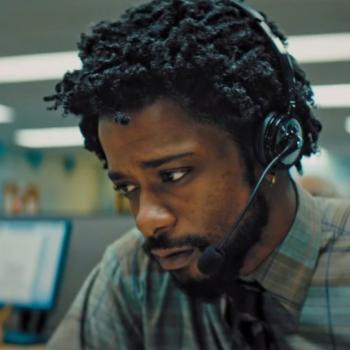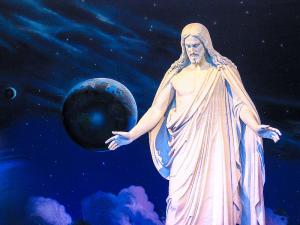I just finished reading Inferno, Dan Brown’s latest book. I’m no expert on Brown, though I have also read The Da Vinci Code. He is justly derided as a bad writer, but he is a good storyteller and sets his attractive characters in compelling locations. I think that Brown’s popularity also comes from his ability to touch on big cultural issues and questions—sometimes overtly and sometimes more indirectly—in familiar, reassuring ways. He touches on them, but doesn’t resolve them for the reader. He reviews them with simple, literary, ritual precision. In my research, I spend a lot of time in the nineteenth century and it strikes me that Brown is very comfortable in this era. Brown considers our unresolved cultural issues with familiar, nineteenth-century tropes and assumptions. He doesn’t talk down to his audience. Elements of high culture—art, literature, and their interpreters—become instruments of illumination, even revelation, not exclusion. In The Da Vinci Code, we begin with a strangely murdered man and end with the assertion that Christianity was built on a lie, the self-conscious suppression of the divine female. In the U.S., Americans increasingly discussed female divinity in the nineteenth century. This was due, in part, to the enormous influx of Catholic immigrants who worshipped Mary and other female saints, as well as to homegrown American groups that championed a divine female figure: the Shakers, Mormons, Christian Scientists. But not far beneath the surface of Brown’s conspiratorial plot lie larger, Reformation-based questions about the importance of individual religious illumination and questing for truth against the stagnation and corruption of tradition and organization. And all of this is mixed with fears of terrorism coded in Brown’s interpretation of Opus Dei as a dangerous, secret conspiracy of violent men.
Inferno begins with the now familiar art historian and “symbologist” Robert Langdon waking up injured in a hospital bed with no memory of the past few days. It ends with a third of the world’s population rendered infertile through an act of global bioterrorism and with larger questions about the balance between individual and social good and the ethics of scientific, genetic manipulation. Similar to the Code, the plot unfolds through a mash-up of Romantic notions, metaphysical magical tradition, anti-Catholicism, and a new entry from the nineteenth century—Darwinism. Recalling the tradition of the Grand Tour, Brown makes Europe the center of action, a treasure map that can be read to unlock the location of a bioterrorism attack that will change the world. Dante’s “Inferno” and Botticelli’s artistic interpretation of that work serve as keys to reveal the way to world salvation. As in nineteenth-century Romanticism, in Brown’s literary world artists, writers, and their intellectual interpreters like Langdon know how to get to the truth. They are able to connect to the wellsprings of divine connection. Brown’s Langdon operates as an attractive leading man version of Joseph Campbell—or, pushing it back further, Carl Jung—reading culturally specific symbols as transcultural, perhaps trans-conscious revelations of universal truths. Like a secular magician, as a “symbologist,” Langdon has access to secret knowledge of such importance that the head of the World Health Organization calls on him to help her avert this act of bioterrorism. Langdon races across Europe with his companions, the Campbellian wise crone Dr. Elizabeth Sinskey and the younger princess/goddess figure, Dr. Sienna Brooks. Echoing the treasure-hunting and elite hermetic practices that were common in America since the Puritan era, Langdon jaunts through Florence, Venice, and Istanbul finding hidden meaning in St. Mark’s Basilica or in a re-purposed head of Medusa. Brown re-enchants not just Europe. The human landscape as a whole whispers deep secrets to those in the know.
Langdon is battling the dead biologist and terrorist, Bertrand Zobrist, and the Consortium, the powerful, secret group that protected Zobrist. The Catholic Church comes in for critique from Langdon and Sinskey because of its opposition to birth control. Yet it’s really in the treatment of the Consortium that Brown taps into long-standing veins of anti-Catholicism that run through American culture in often transformed guise: anti-Masonry, anti-Mormonism, anti-communism and, most recently, anti-Islam. This is a fear of secret, hierarchical groups that are seen as intent on attacking the democratic American way of life. Wealth and power allow people like Zobrist to impinge on the individual’s right to control their own reproduction: an overt story of bioterrorism, a coded discussion of abortion and reproductive manipulation, perhaps? How much can and should governments interfere with reproduction for the greater good? When do the actions of the government or its agents cross over into the authoritarian control of the Catholic Church?
Brown also sounds nineteenth-century themes within Social Darwinism. Transhumanist Zobrist argues that humans have evolved to the point where, with their knowledge of genetics, they can speed up and control the process of natural selection and evolution. This was a common assertion among earlier reforming Social Darwinists, though they were focused on human moral and cultural, rather than biological development. At the end of the book we realize that Zobrist is not unleashing another Black Death, a violently painful, “natural” method of human population control. Rather, he has created a kinder, gentler involuntary virus-activated infertility. Brown leaves us with no clear answers as to how the world will or should deal with this, but he seamlessly marries together religion and science, a pairing that the media today hypes as antithetical but that had a much easier partnership in the past. Saint Lucia’s relics could miraculously prolong people’s lives; they had given way to genetic engineering, humans playing God. In Brown’s story, science and religion perform the same functions and carry the same mysterious power.
Brown tells a good story. But he also tells old and comforting stories, cogitating on big questions with familiar tropes. Critics may skewer him for his writing, improbable plots, and cardboard characters. Still, Brown has an ear for unresolved issues plaguing modern Americans and he knows how and how much to talk about them in order to draw readers into his fictional world. He is a literary Langdon uncovering the anxieties of modern Americans and, perhaps, relieving them for a short, escapist, regressing moment.










